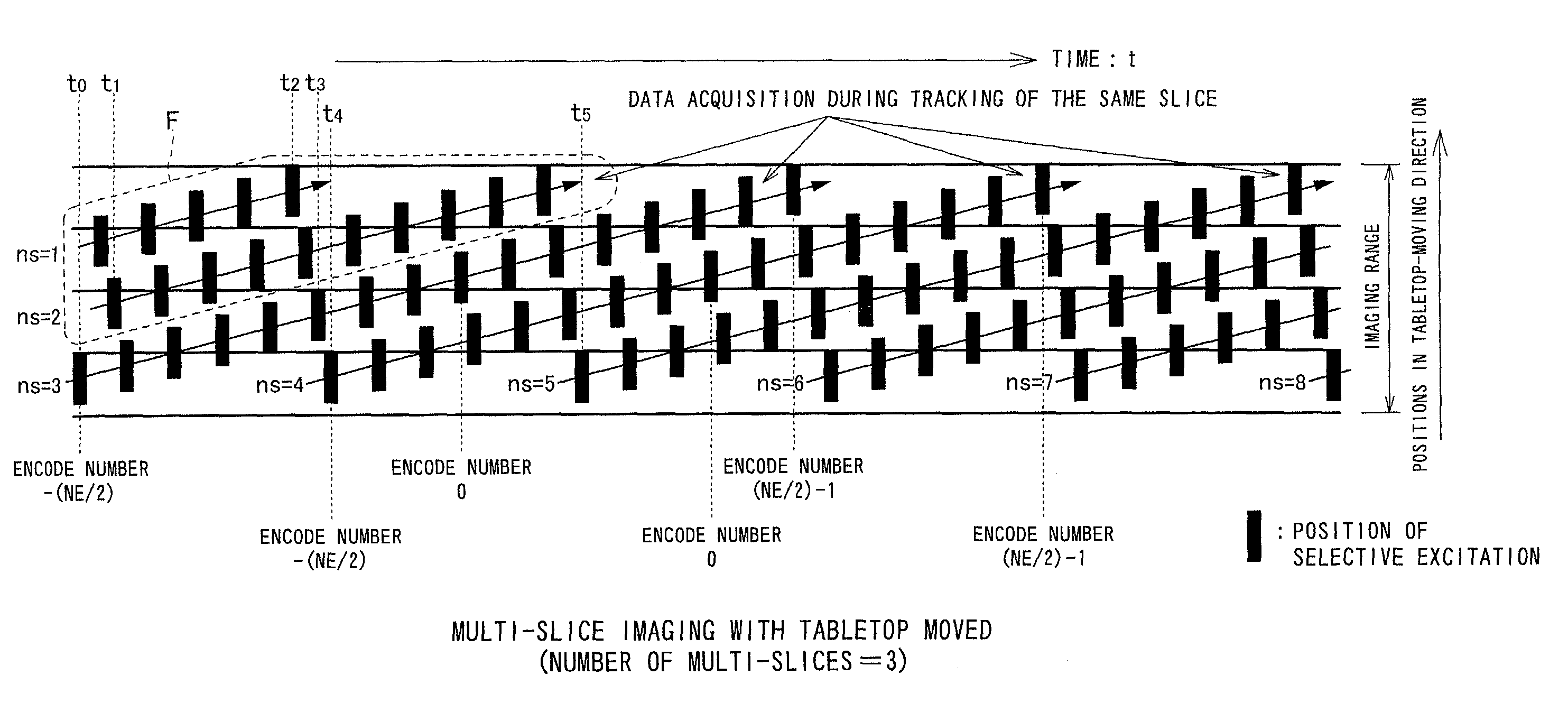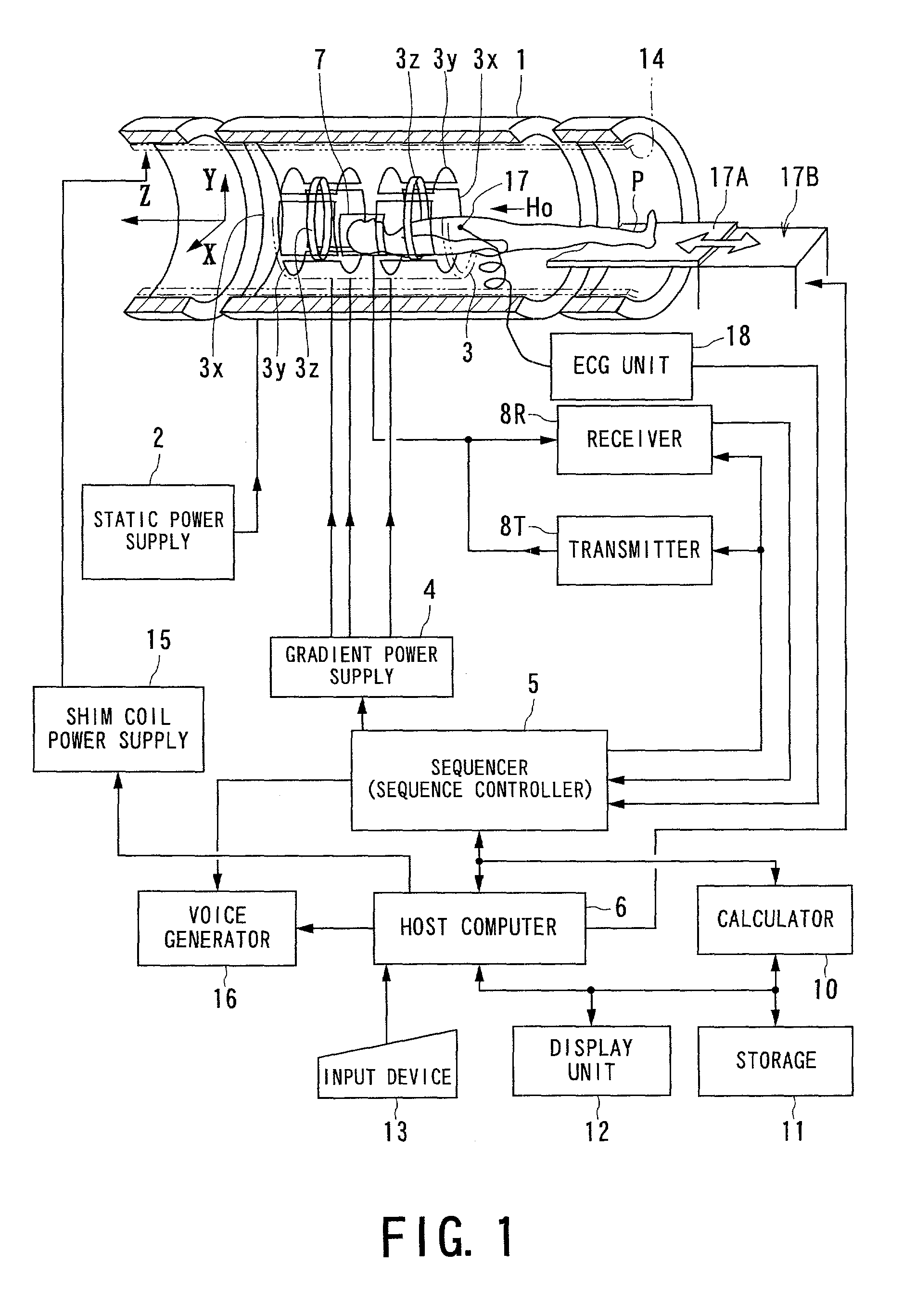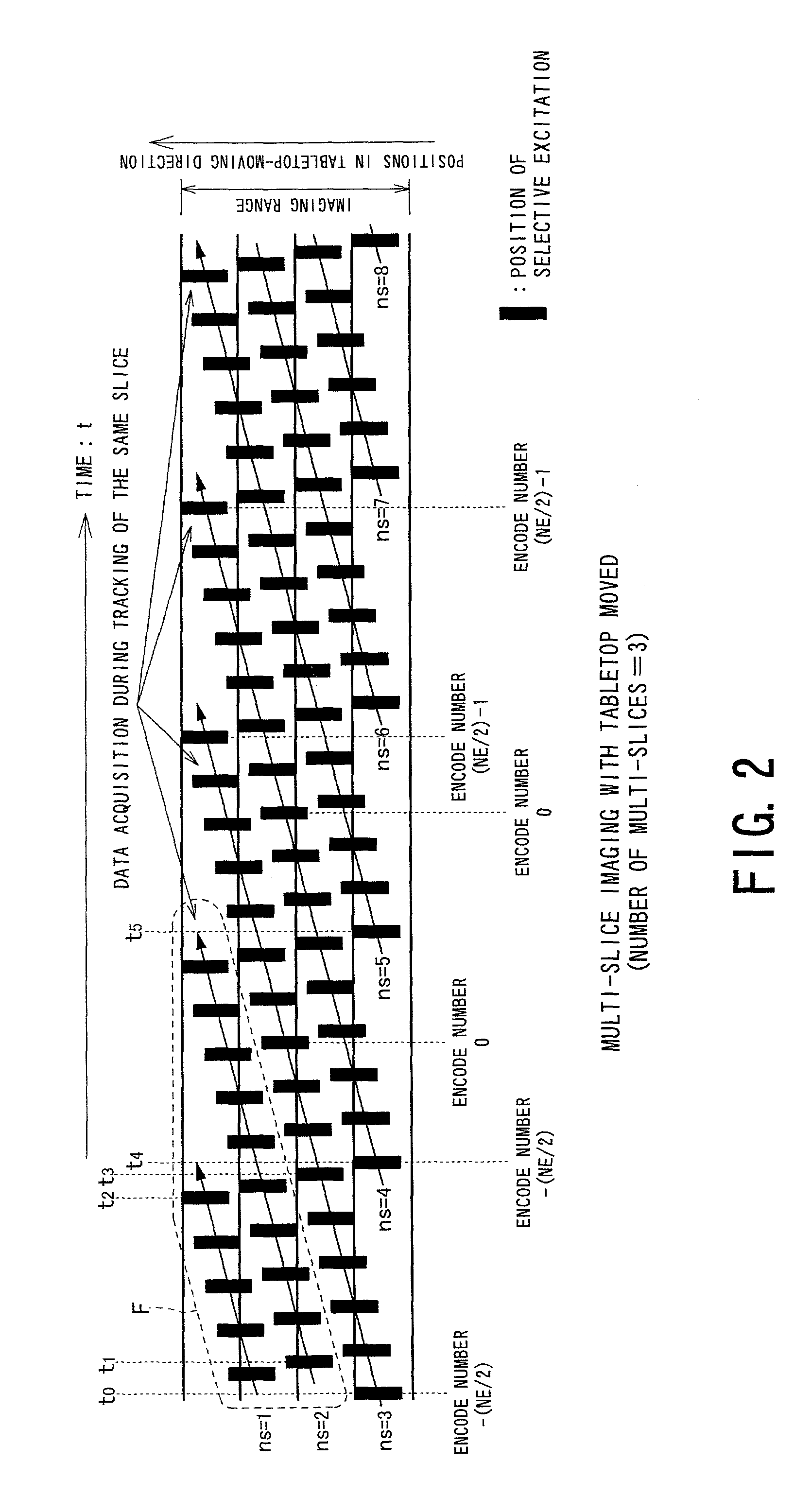Magnetic resonance imaging for a plurality of selective regions set to object continuously moved
a selective region and magnetic resonance imaging technology, applied in the field of magnetic resonance imaging systems, can solve the problems of difficult speedy imaging, inability to acquire data efficiently, and non-standard mr imaging, so as to prevent or suppress artifacts, reduce data acquisition time, and reduce the effect of unnecessary signals
- Summary
- Abstract
- Description
- Claims
- Application Information
AI Technical Summary
Benefits of technology
Problems solved by technology
Method used
Image
Examples
first embodiment
[0035]A first embodiment of the present invention will now be described. FIG. 1 shows an outlined configuration of an MRI (magnetic resonance imaging) system used in common in the following various embodiments.
[0036]The MRI system comprises a patient couch portion on which an object (patient) P lies down, static magnetic field generating components for generating a static magnetic field, magnetic field gradient generating components used for appending positional information to the static magnetic field, transmitting / receiving components for transmitting and receiving radio-frequency signals, control and arithmetic operation components responsible for both control of the whole system and image reconstruction, and electrocardiographing components for acquiring an ECG signal indicative of cardiac temporal phases of the object P.
[0037]The static magnetic field generating components include a magnet 1 formed into, for example, a superconducting type, and a static power supply 2 for suppl...
second embodiment
[0079]Referring to FIGS. 5 and 6, a magnetic resonance imaging system according to a second embodiment of the present invention will now be described. The hardware of this system is configured in the same way as that in the first embodiment.
[0080]In the foregoing first embodiment, adopted was the configuration in which the moving direction of an object agrees with the slice selecting direction. Instead, the present second embodiment provides an imaging technique called oblique imaging (scan) in which both of the above directions are different from each other. In practical diagnosis, the oblique imaging is performed, for example, in such a manner that a section to be imaged is set along a direction of the OM line of an object (patient).
[0081]The oblique imaging according to the present embodiment adopts scanning conditions determined to adjust the carrier frequency for selective excitation in compliance with the geometrical relationship between a moving direction of a patient P and a...
PUM
 Login to View More
Login to View More Abstract
Description
Claims
Application Information
 Login to View More
Login to View More - R&D
- Intellectual Property
- Life Sciences
- Materials
- Tech Scout
- Unparalleled Data Quality
- Higher Quality Content
- 60% Fewer Hallucinations
Browse by: Latest US Patents, China's latest patents, Technical Efficacy Thesaurus, Application Domain, Technology Topic, Popular Technical Reports.
© 2025 PatSnap. All rights reserved.Legal|Privacy policy|Modern Slavery Act Transparency Statement|Sitemap|About US| Contact US: help@patsnap.com



